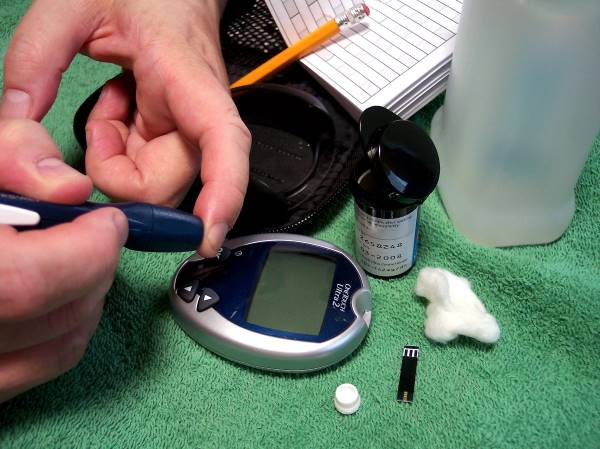Diabetes is a condition which affects blood sugar levels. In turn, this can reduce your ability to drive well due to changes in your coordination, concentration, alertness and vision. Having diabetes doesn’t necessarily mean that you have to give up driving but it does mean that you will need to manage your diabetes and its symptoms in order to stay safe behind the wheel.
DVSA has some restrictions for some types of diabetes and we’ll explain it below.
There are two types of blood sugar abnormalities.
Hypoglycaemia
Hypoglycaemia is when your blood sugar levels are too low. Low blood sugar can:
- impair your coordination and judgment which makes it difficult for you to react to situations on the road, judge your speed or keep your vehicle within its lane
- make you nervous and shaky which will affect your ability to make good decisions when you are driving
- give you amnesia which can make it difficult for you to remember why your are driving or where you are
- make you feel extremely tired which dramatically increases the risk of you falling asleep at the wheel while driving
- cause you to have a seizure or other type of paralysis which might prevent you from controlling your vehicle.
In some hypo episodes you will be able to feel the onset and you can take action to reverse it (see below), but sometimes you could have a hypo with no warning signs and these are the most dangerous for driving. If your blood glucose level is less than 4mmol/L you have hypoglycaemia, even if you don’t feel any different or don’t feel any symptoms, and you must not drive. If your blood glucose is between 4-5mmol/L take some carbohydrates before driving.
Hyperglycaemia
Hyperglycaemia is when your blood sugar levels are too high. This usually results in excessive hunger and thirst, and an increased volume of urination. While those symptoms are not particularly dangerous, there are some associated symptoms which are such as lack of concentration, blurry vision and falling asleep at the wheel.
If you have severe hyperglycaemia you should avoid driving.
Both types of diabetes can have other longer-term effects on your body including cataracts, heart disease and nerve damage.
Your driver licence as a diabetic
Driving a group 1 vehicle (car or motorbike)
If you manage your diabetes without medication (i.e. using your diet) or if you are on non-insulin medication you don’t need to notify DVSA unless:
- You’ve experienced a disabling hypoglycaemic episode while driving
- You are not able to recognise hypoglycaemic episodes as they develop (impaired awareness)
- You’ve had two severe hypoglycaemic episodes in the past 12 months where you were dependent on another person to treat you
- You’ve experienced some change in your abilities due to diabetes that has caused additional problems with vision (e.g. blurry vision), circulation or sensation (e.g. the inability to effectively operate the pedals)
- You need laser treatment for both eyes or in the remaining eye if you only have sight in one eye.
You must tell DVSA if you are managing your diabetes with insulin.
Driving a group 2 vehicle (lorries and buses)
You must tell DVSA if any of the following apply:
- Any of the issues mentioned above, plus:
- Your eyesight doesn’t meet the required minimum, which has higher standards than that for cars
- You start treatment with sulphonylurea or a glinide.
Requirements from DVSA
You can be fined up to £1000 if you don’t tell DVSA about a medical condition that affects your driving. If you are involved in an accident as a result of that condition then you may be prosecuted.
Requirements from your insurance company
You will need to let your insurance company know otherwise they may refuse a claim. They will require the specifics about your treatment. If your treatment changes then you also might be required to tell them, for example if you start having to take insulin. Always challenge your insurance company’s premium if you think it is too high for the level of risk your symptoms present. For example, if you can self-manage your symptoms and they don’t affect your driving at all, there is very little reason why an insurance company would need to raise your premiums.
Diabetes UK Insurance Services offers vehicle insurance for people with diabetes.
Driving safely with diabetes
Always eat at your regular time – don’t delay your meals. This means you need to plan for the extra time that your journey will take. Take snacks with you so that you have something available if you need a quick fix. You should always carry some fast-acting simple carbohydrates for instant sugar absorption and some foods with a mix of simple and complex carbohydrates to last for a longer time. Keep sealed, long-life foods in your glovebox, but remember to change them frequently in summer when the heat inside the car could damage them.
Glucose tablets, boiled sweets and cartons of fruit juice are fast-acting; muesli bars and biscuits will give you an energy release over a longer period of time.

Before you go out driving, check your blood sugar levels (within two hours before leaving). Don’t drive if they are abnormally low or high. Once your blood sugar levels have returned to normal you should wait 30-60 minutes before you start driving again. Check your blood sugar levels every couple of hours.
The symptoms of hypoglycaemia to be aware of when driving are hunger, sweating, fast pulse, anxiety, tingling lips and feeling faint. If you notice any of these you must pull over immediately and address the symptoms.
If you have to make a stop to unload or load the vehicle this can trigger a hypo episode. Make sure you eat after exerting yourself.
Never drink alcohol as it has a much more pronounced effect on your driving if you are diabetic.
